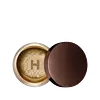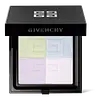What's inside
What's inside
 Key Ingredients
Key Ingredients

 Benefits
Benefits

No benefits
 Concerns
Concerns

 Ingredients Side-by-side
Ingredients Side-by-side

Talc
AbrasiveSynthetic Fluorphlogopite
Silica
AbrasiveZinc Stearate
Cosmetic ColorantDimethicone
EmollientDiisostearyl Malate
EmollientOctyldodecyl Stearoyl Stearate
EmollientCaprylyl Glycol
EmollientPentylene Glycol
Skin ConditioningPhenyl Trimethicone
Skin ConditioningSodium Dehydroacetate
PreservativeParfum
MaskingSorbitan Sesquioleate
EmulsifyingTocopheryl Acetate
AntioxidantKaolin
AbrasiveHydrolyzed Sericin
Skin ConditioningCI 77891
Cosmetic ColorantCI 77288
Cosmetic ColorantCI 77007
Cosmetic ColorantCI 77742
Cosmetic ColorantCI 19140
Cosmetic ColorantTalc, Synthetic Fluorphlogopite, Silica, Zinc Stearate, Dimethicone, Diisostearyl Malate, Octyldodecyl Stearoyl Stearate, Caprylyl Glycol, Pentylene Glycol, Phenyl Trimethicone, Sodium Dehydroacetate, Parfum, Sorbitan Sesquioleate, Tocopheryl Acetate, Kaolin, Hydrolyzed Sericin, CI 77891, CI 77288, CI 77007, CI 77742, CI 19140
Ingredients Explained
These ingredients are found in both products.
Ingredients higher up in an ingredient list are typically present in a larger amount.
Silica, also known as silicon dioxide, is a naturally occurring mineral. It is used as a fine, spherical, and porous powder in cosmetics.
Though it has exfoliant properties, the function of silica varies depending on the product.
The unique structure of silica enhances the spreadability and adds smoothness, making it a great texture enhancer.
It is also used as an active carrier, emulsifier, and mattifier due to its ability to absorb excess oil.
In some products, tiny microneedles called spicules are made from silica or hydrolyzed sponge. When you rub them in, they lightly polish away dead skin layers and enhance the penetration of active ingredients.
Learn more about SilicaThis ingredient is a preservative with antimicrobial properties. It is the sodium salt of dehydroacetic acid.
It is especially effective at preventing bacterial and fungal growth in low concentrations.